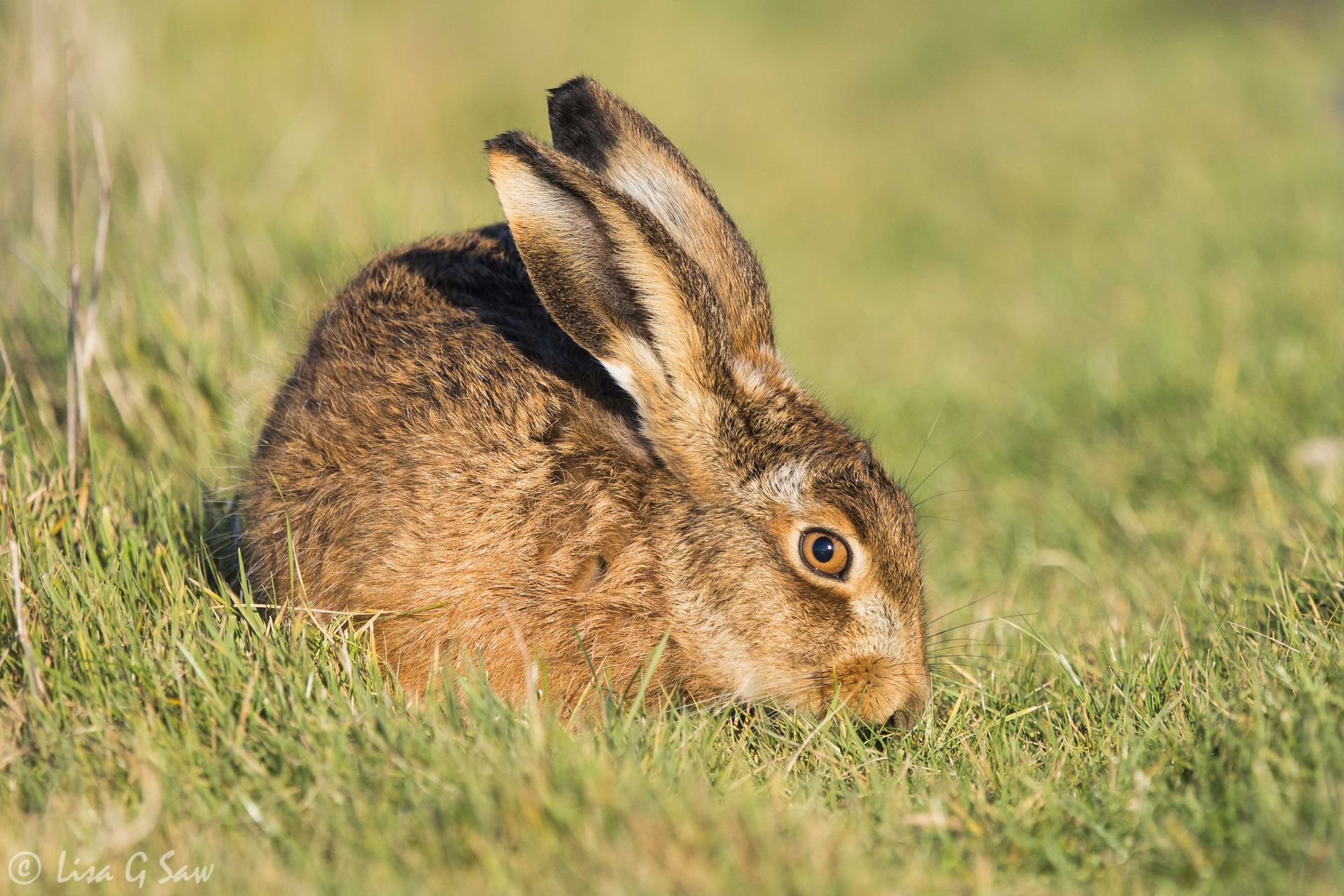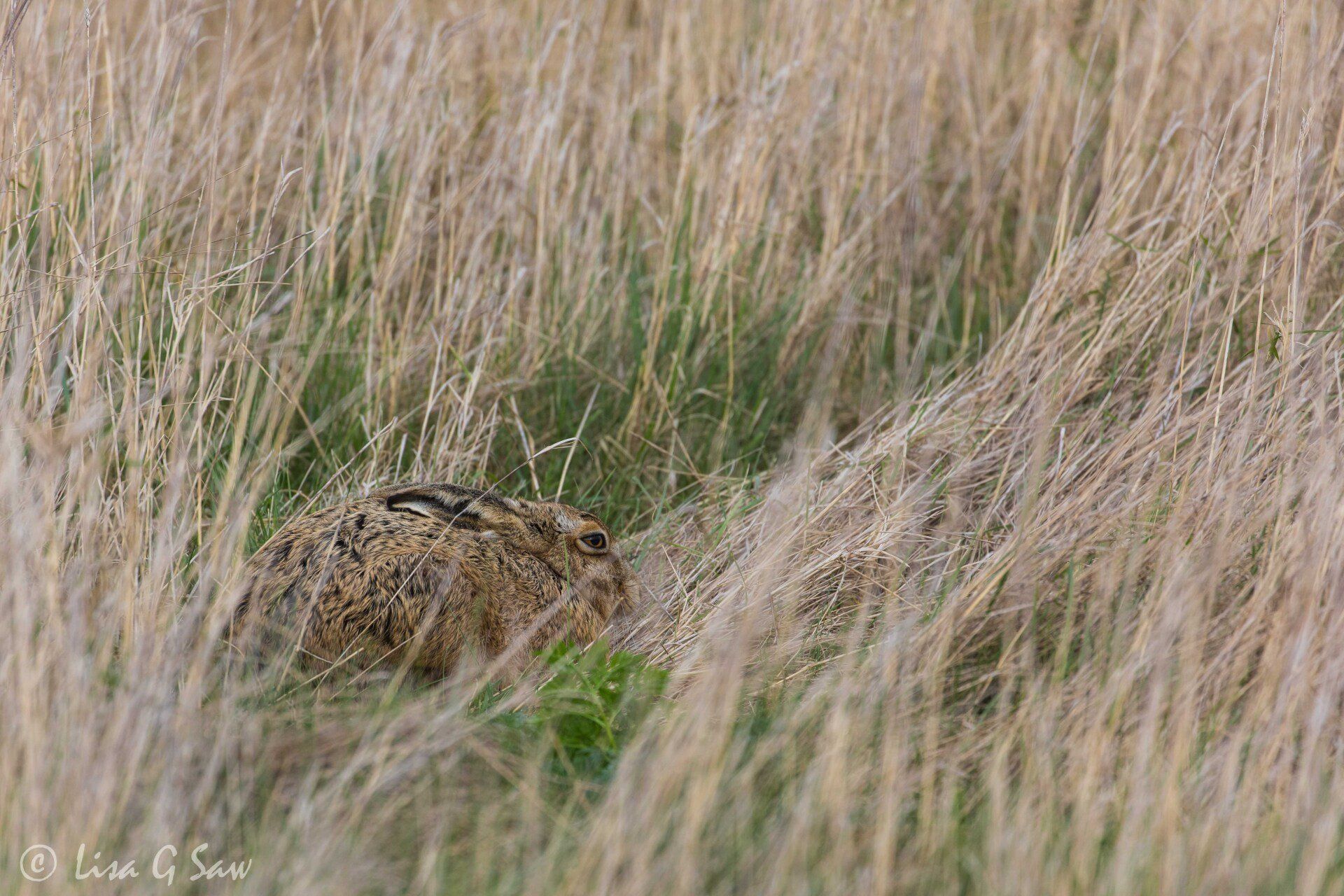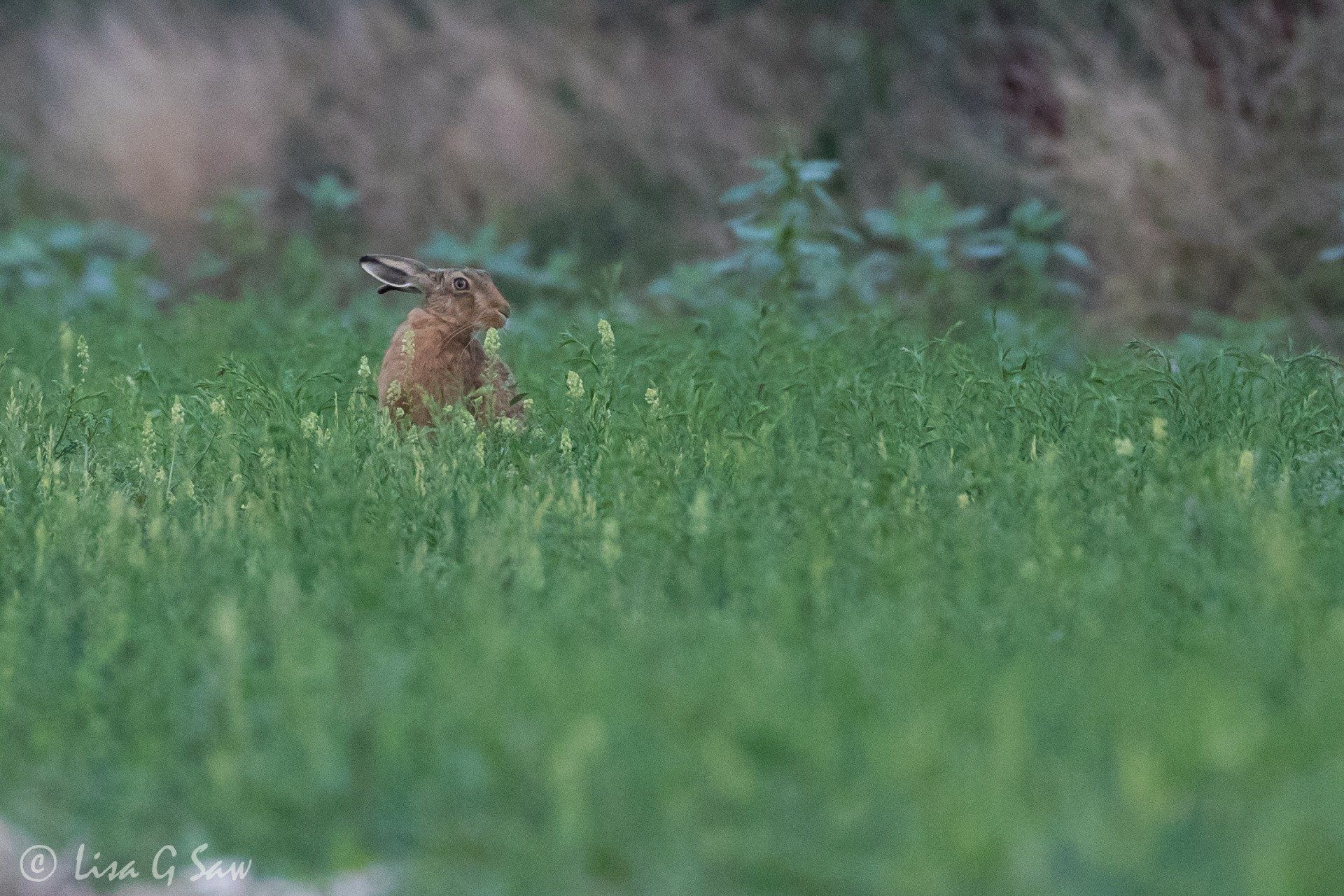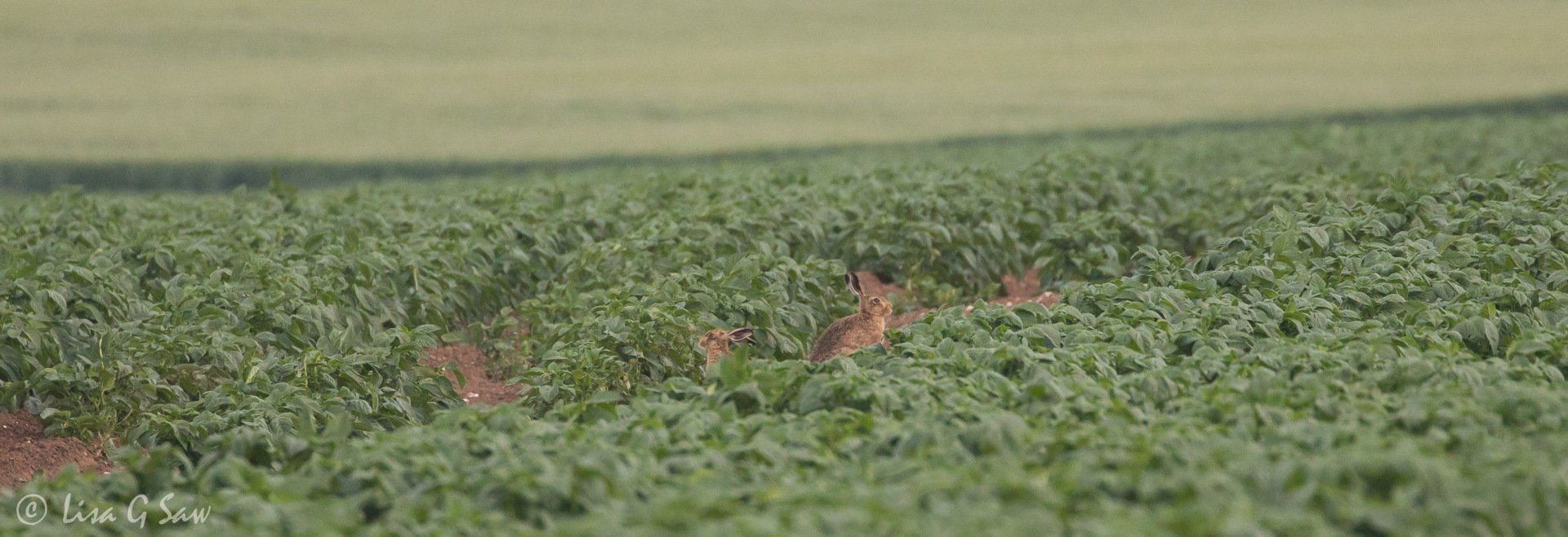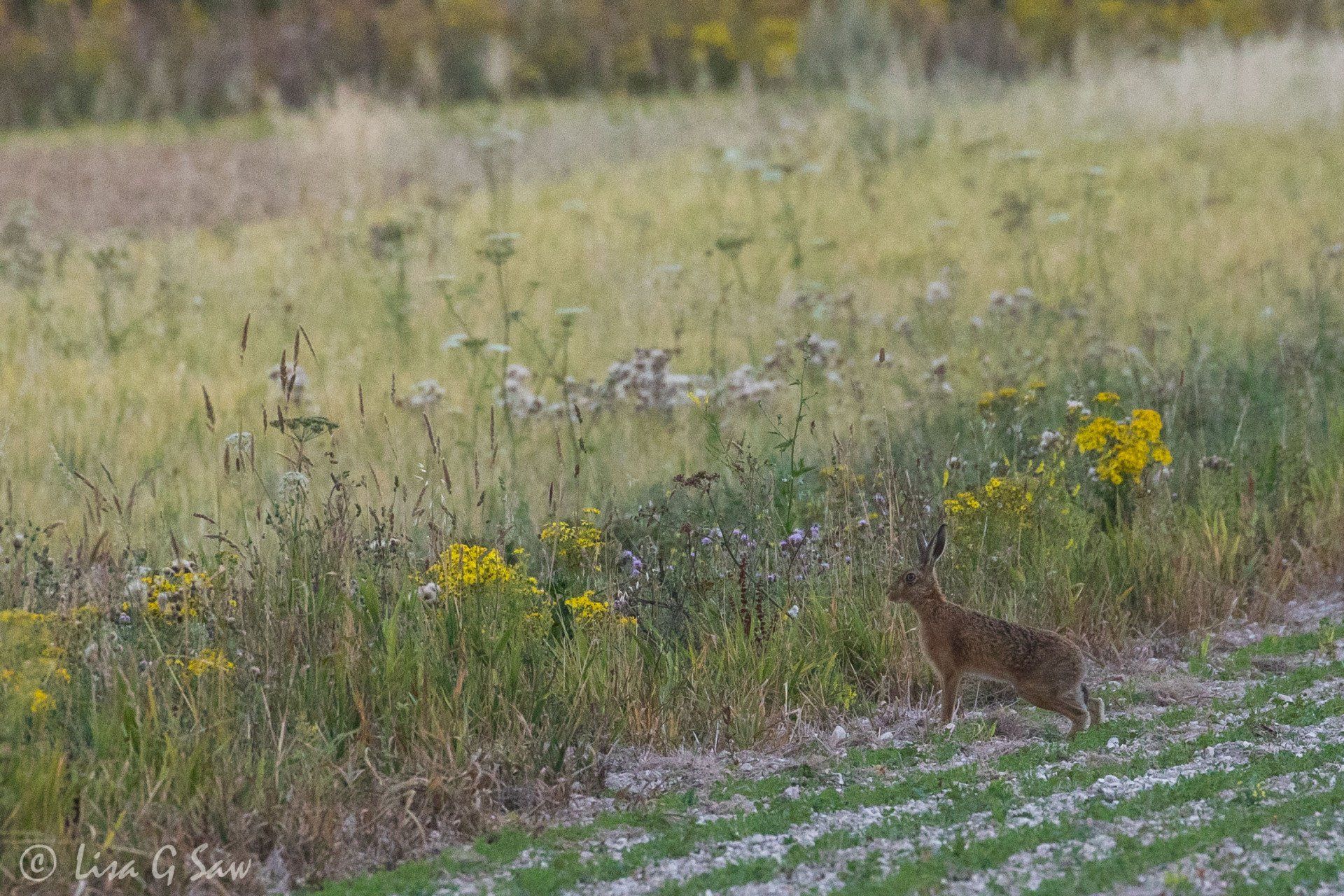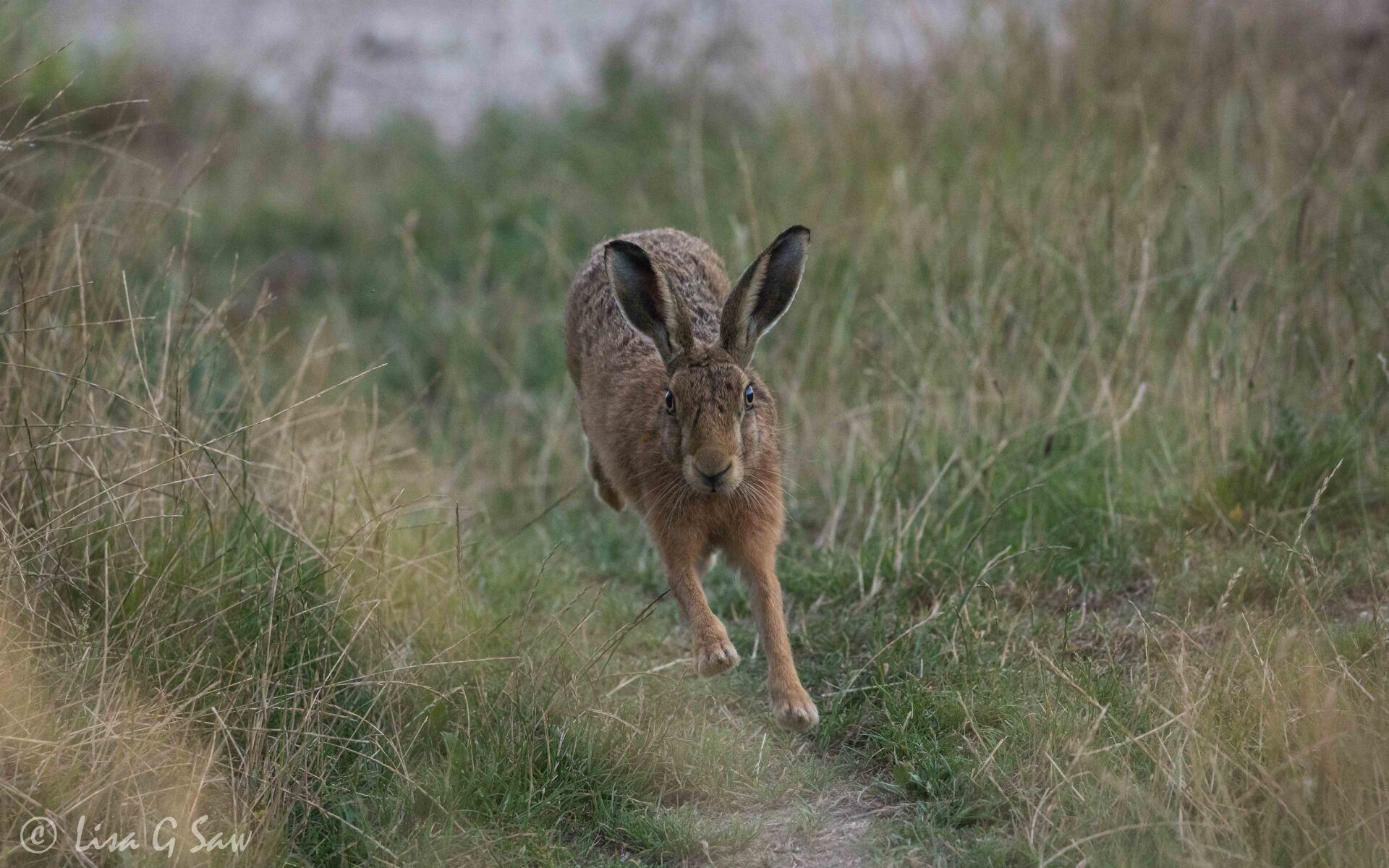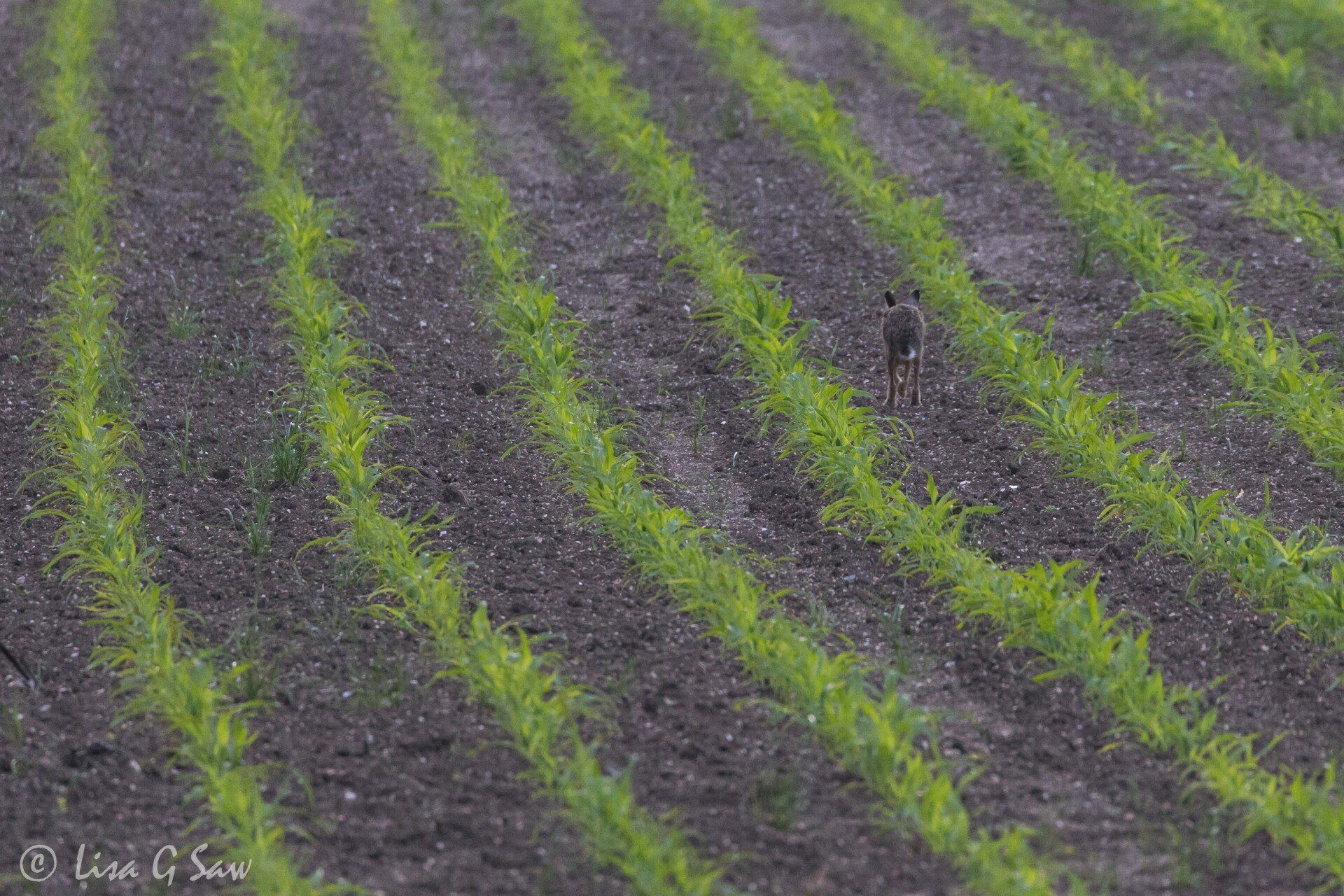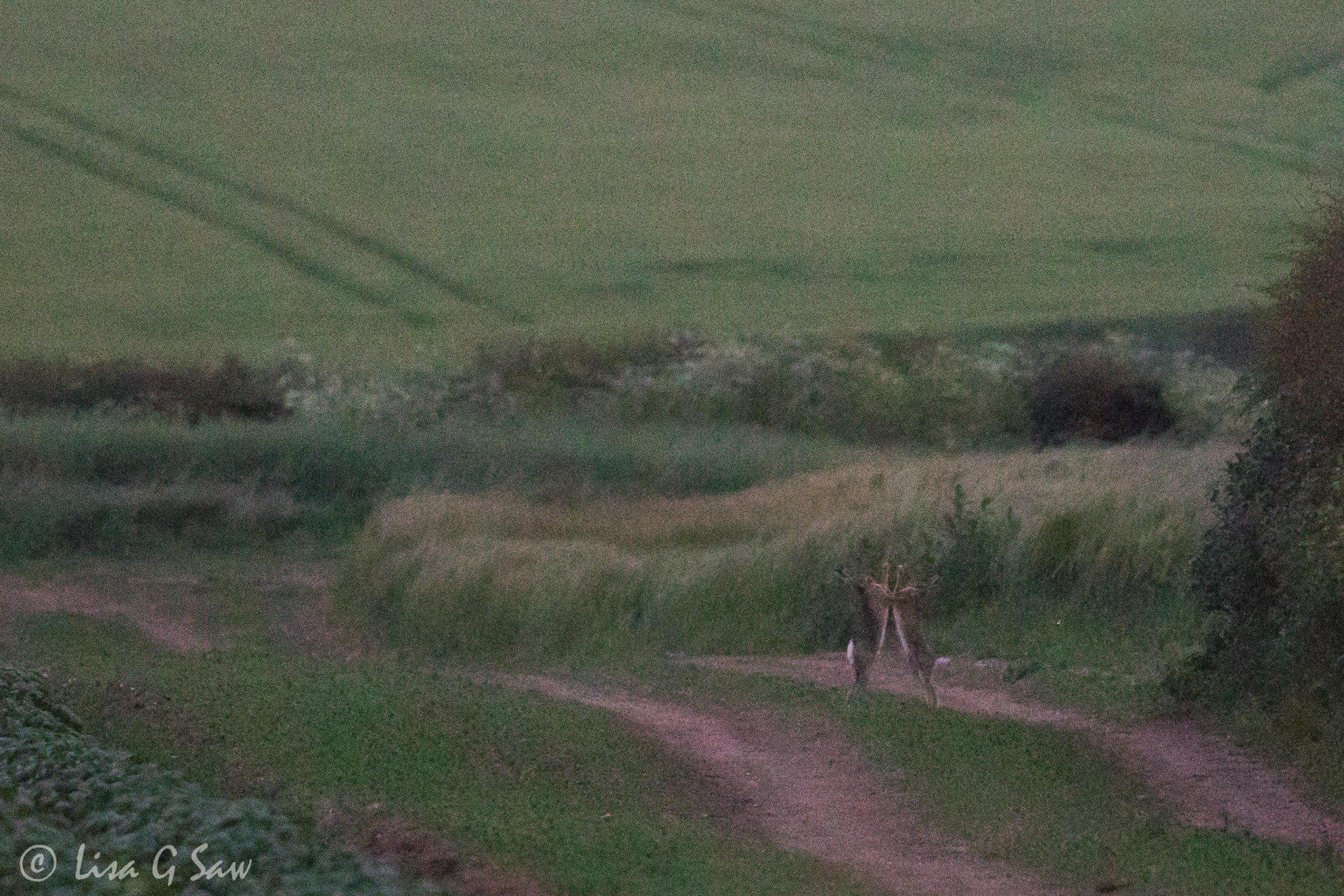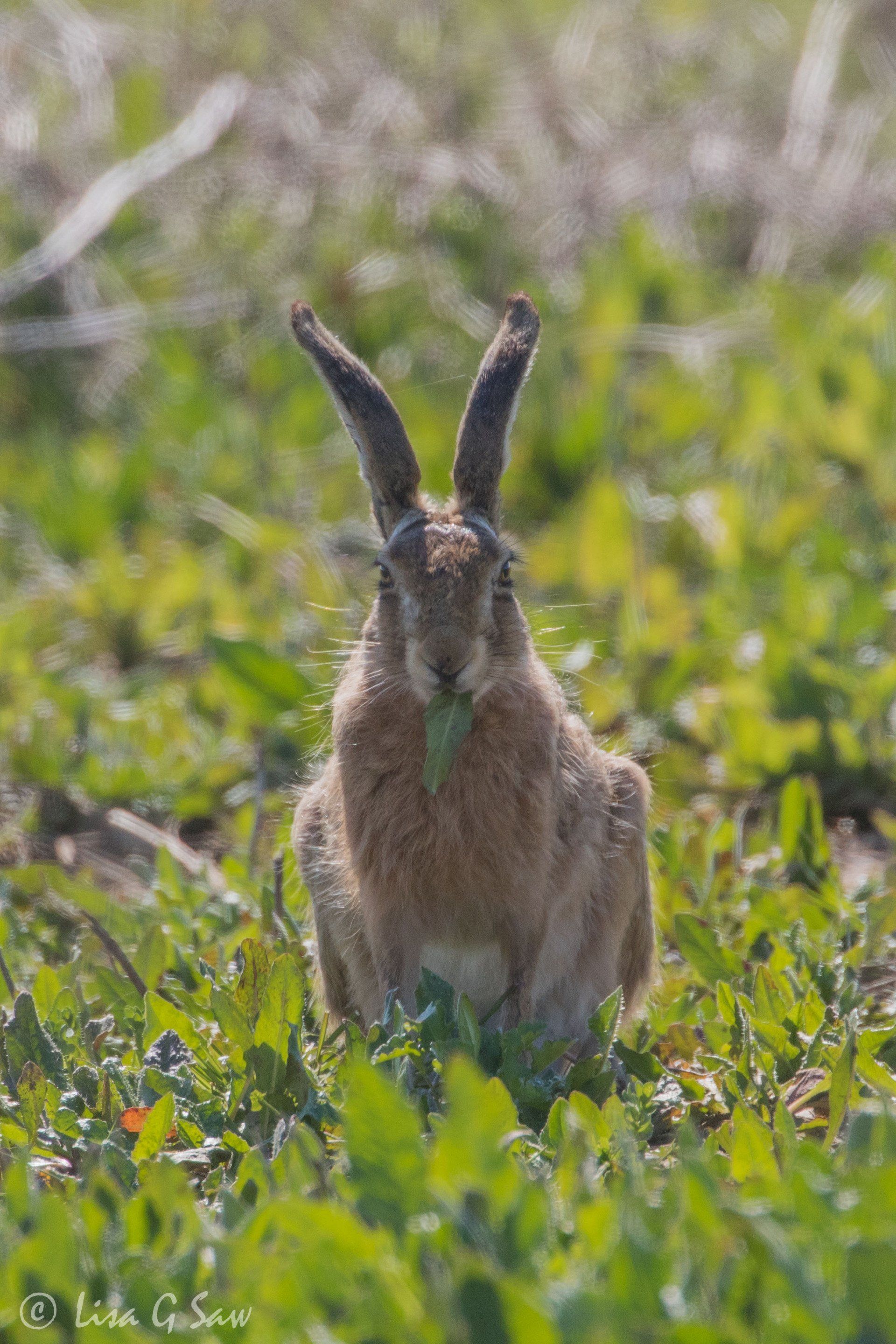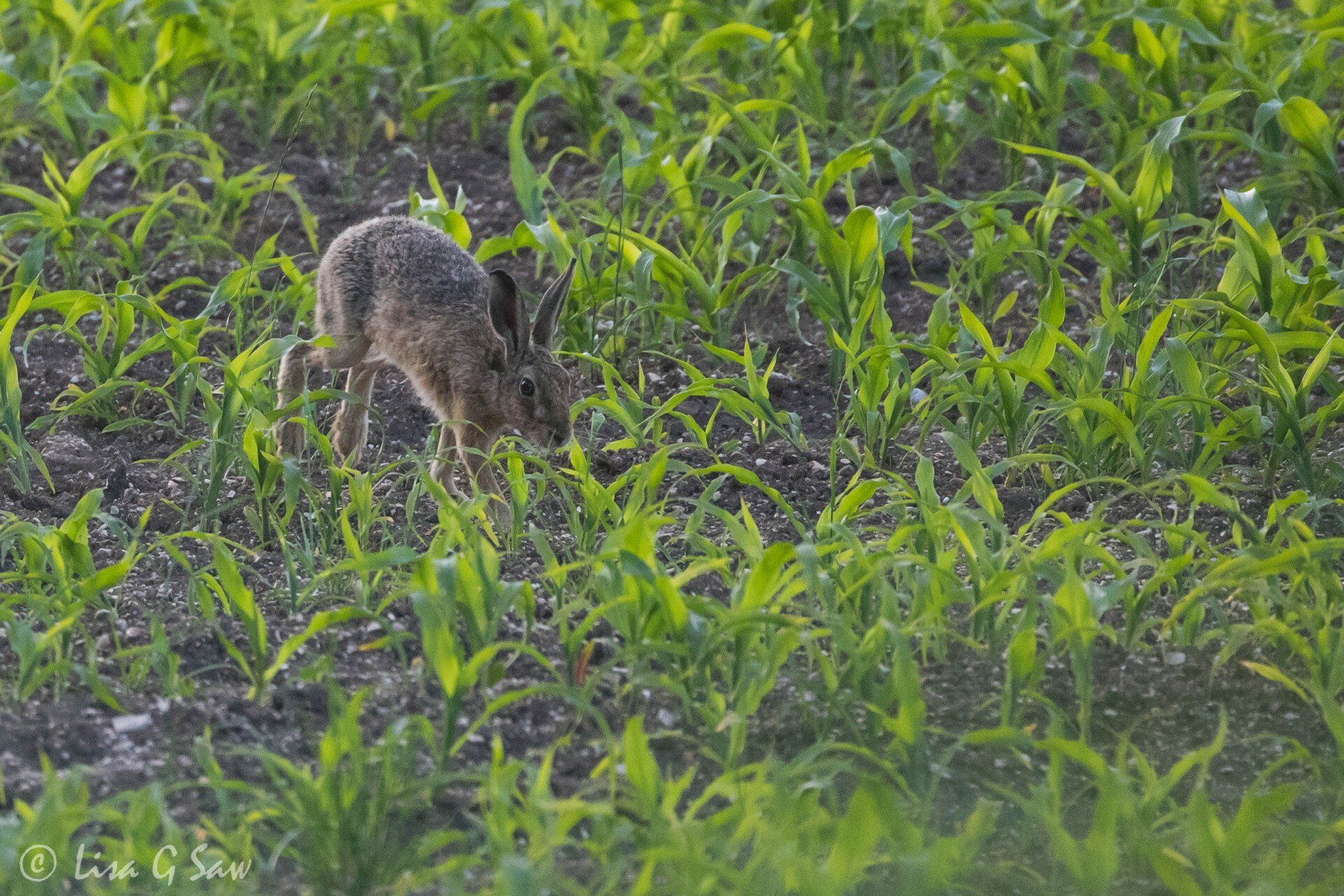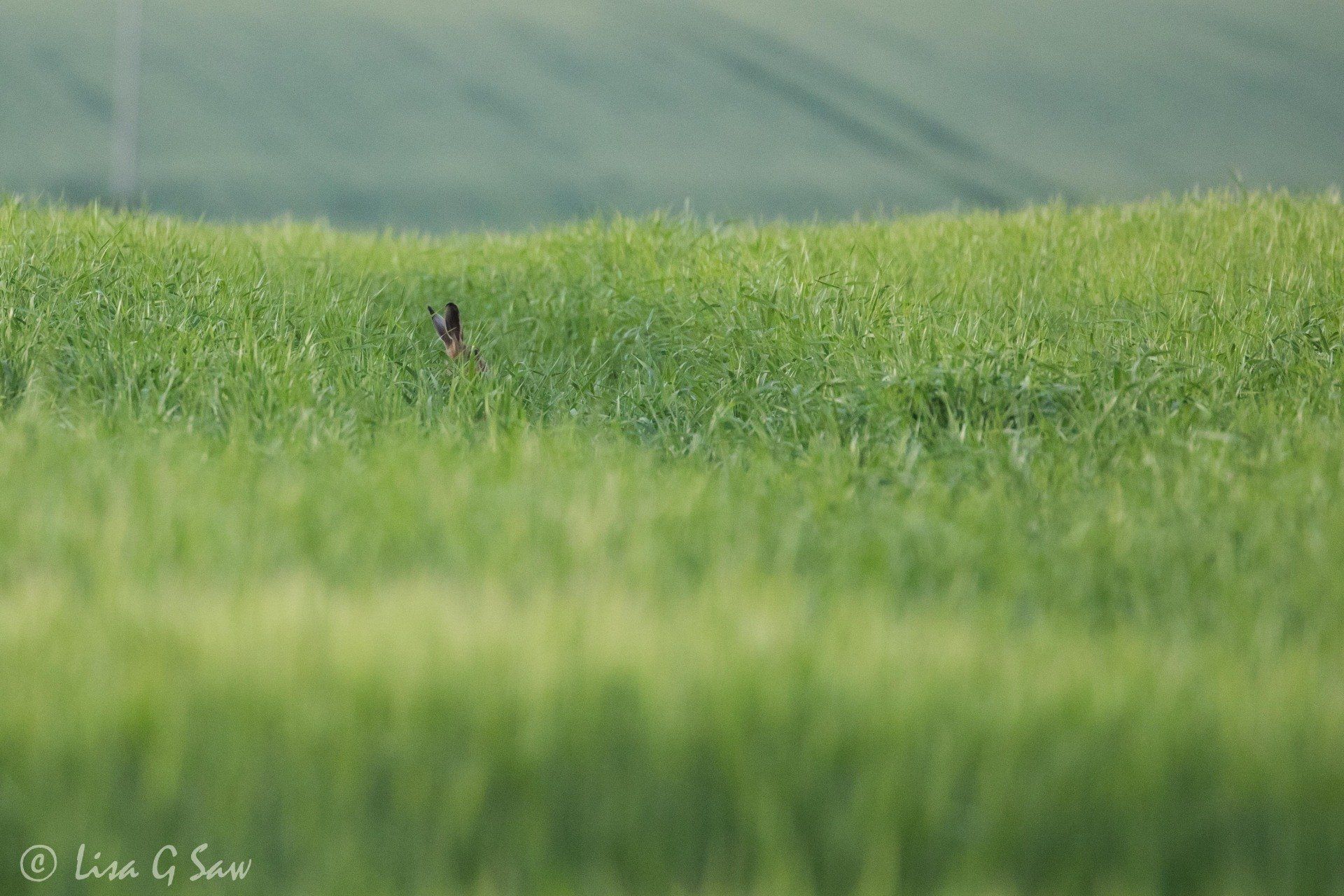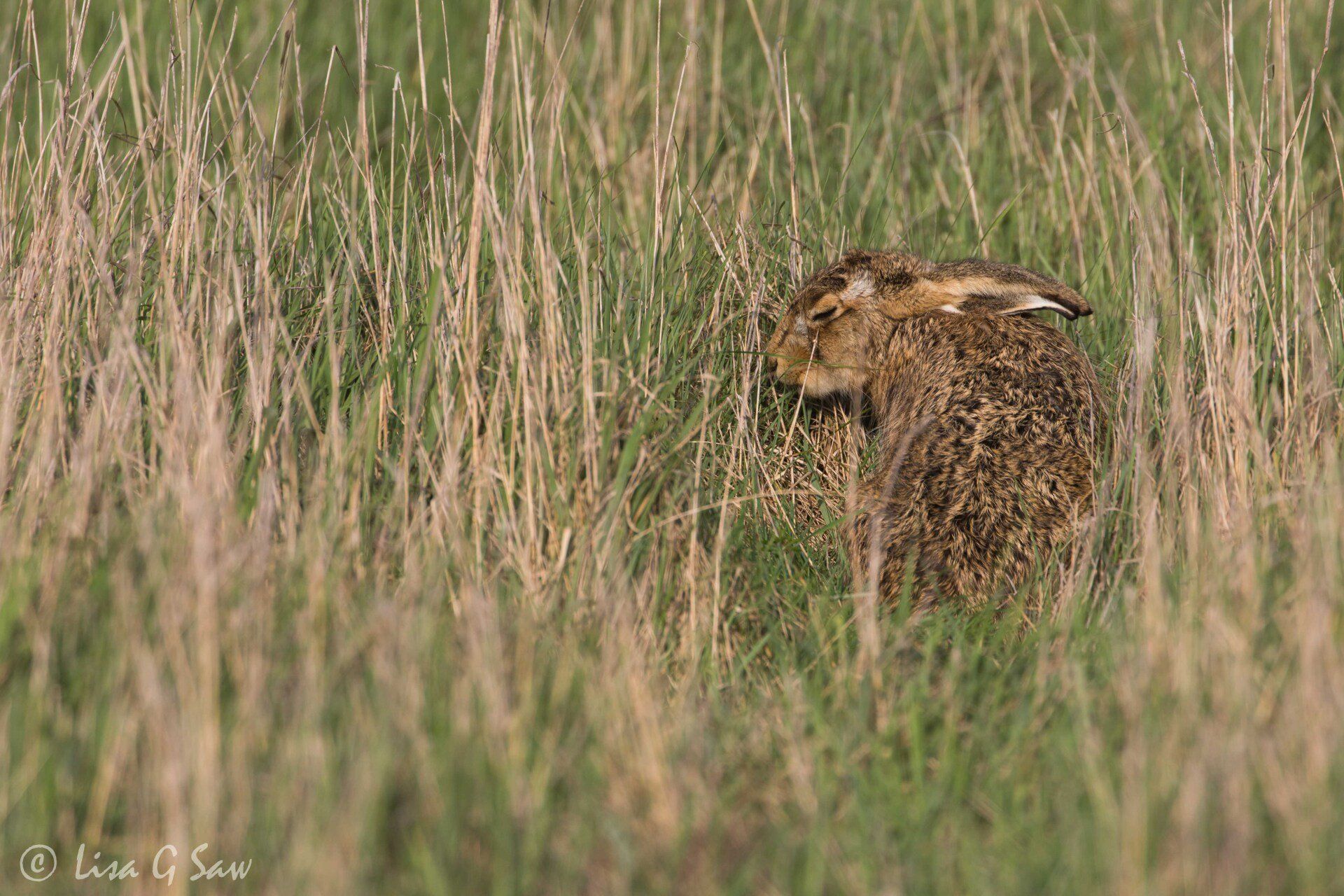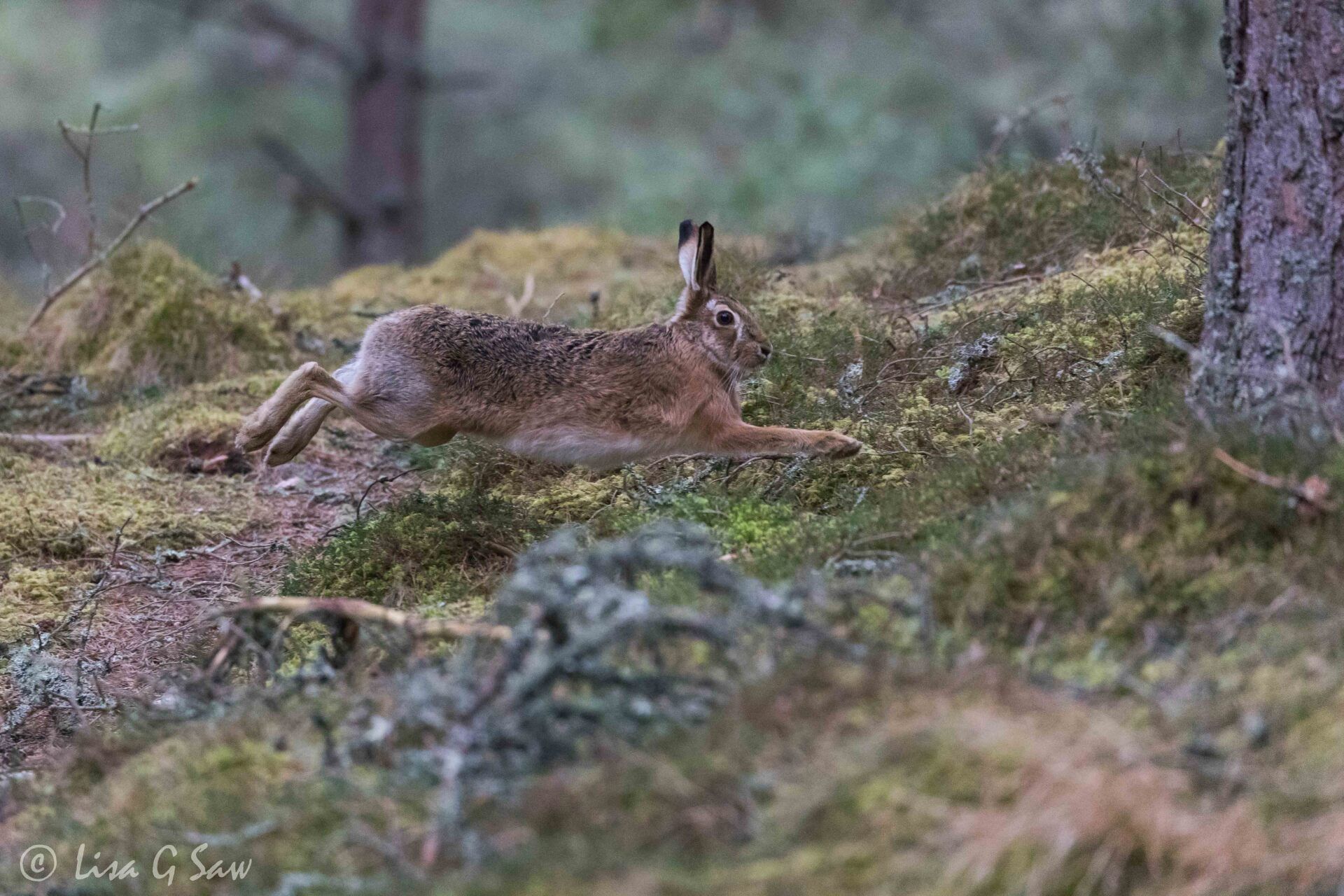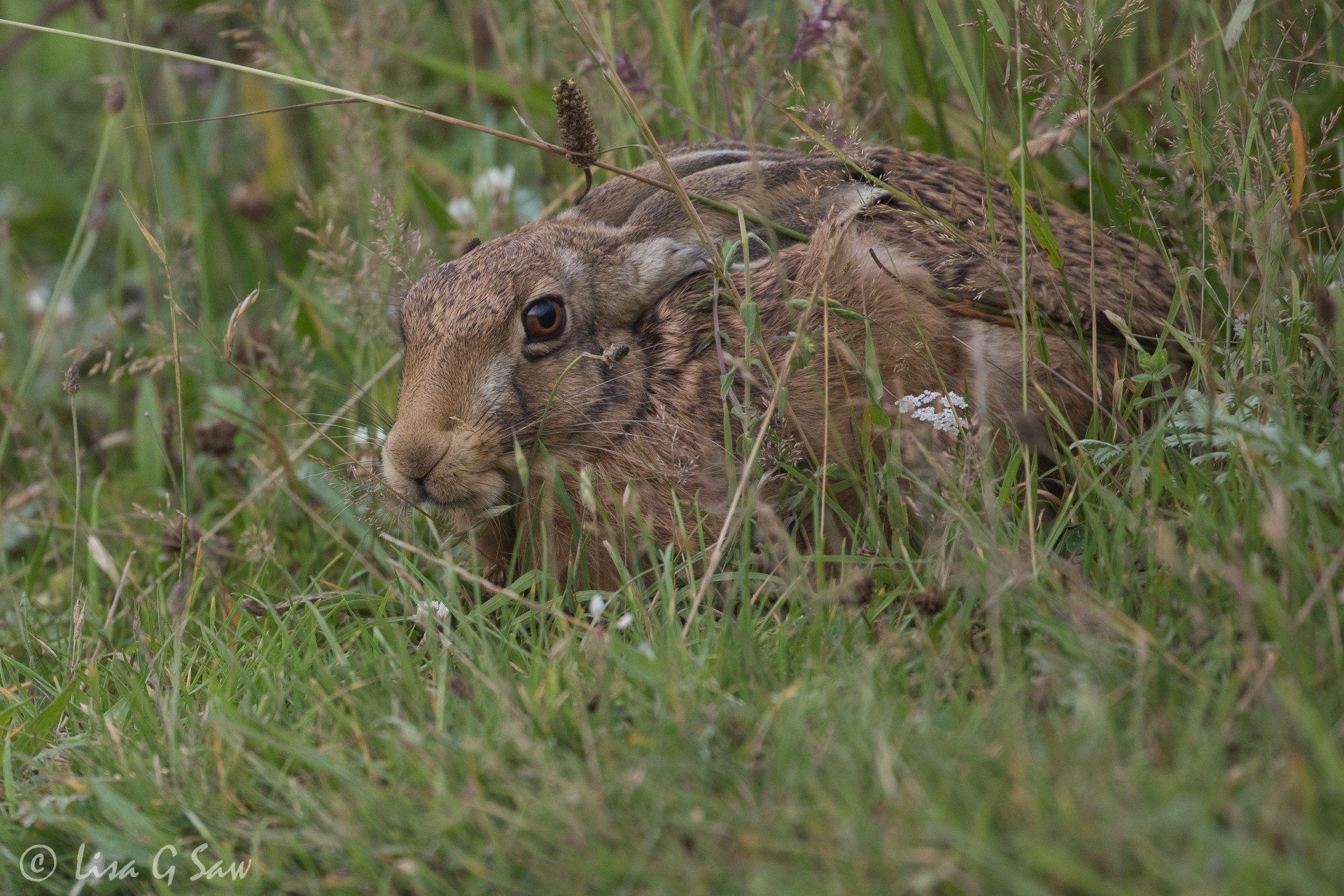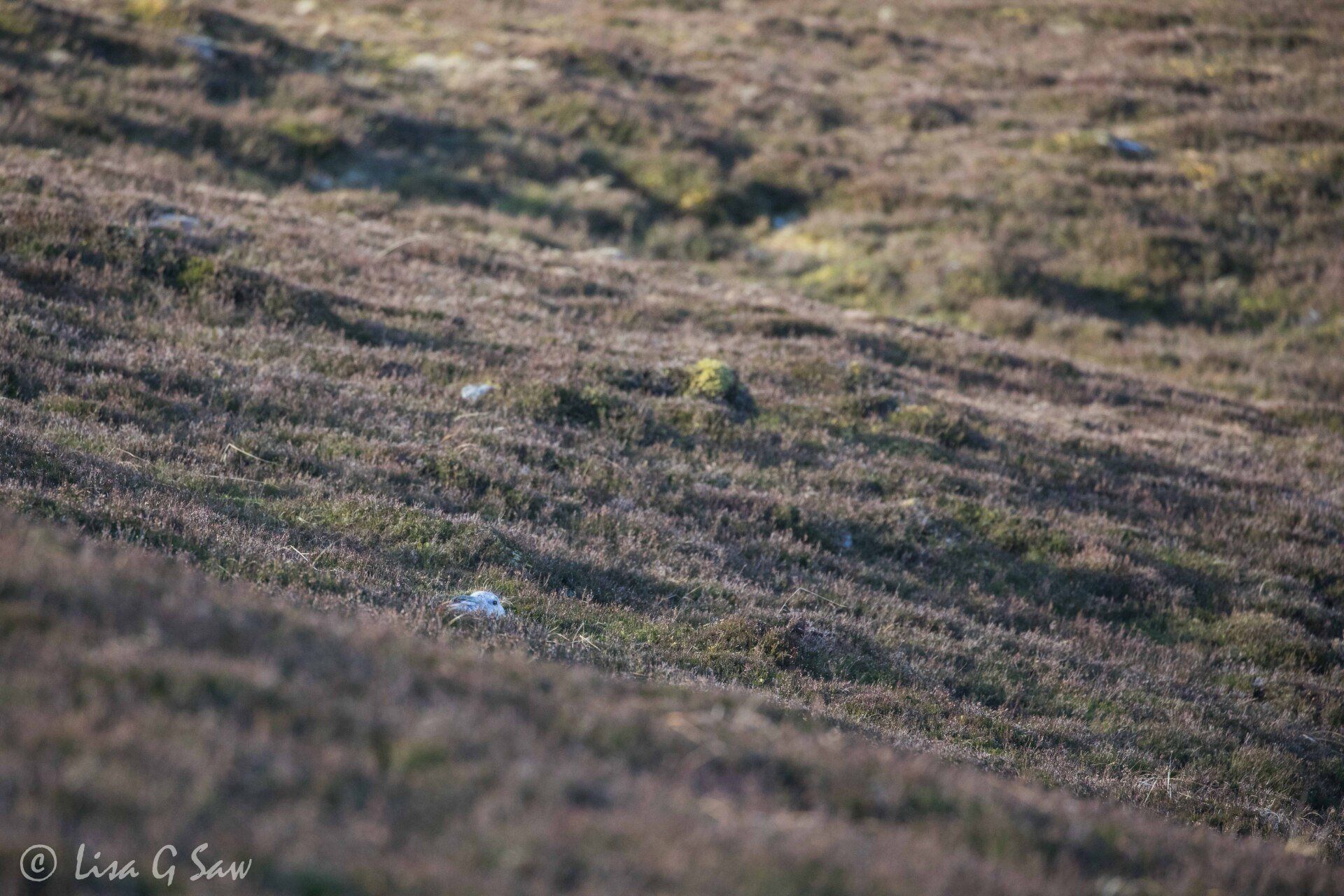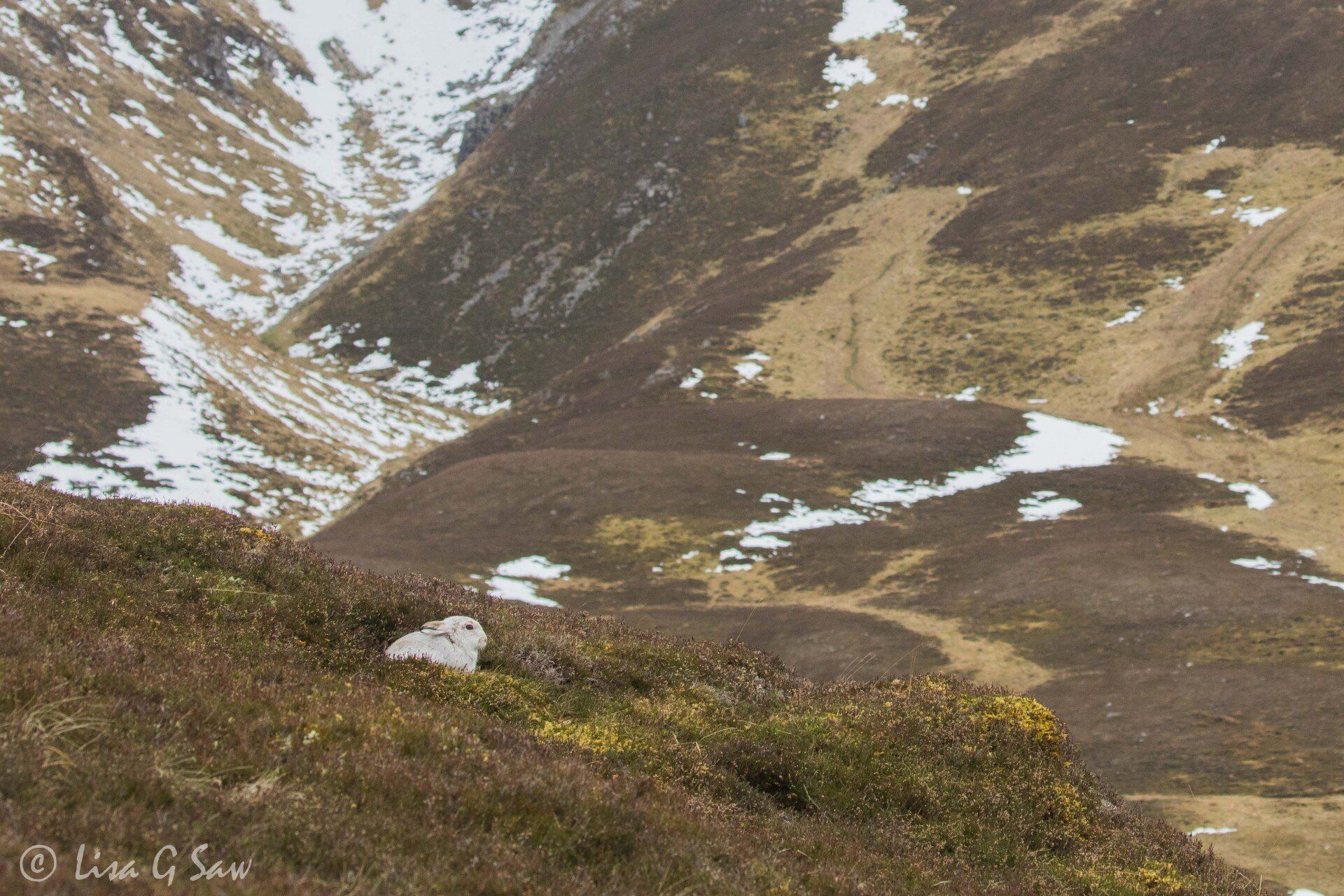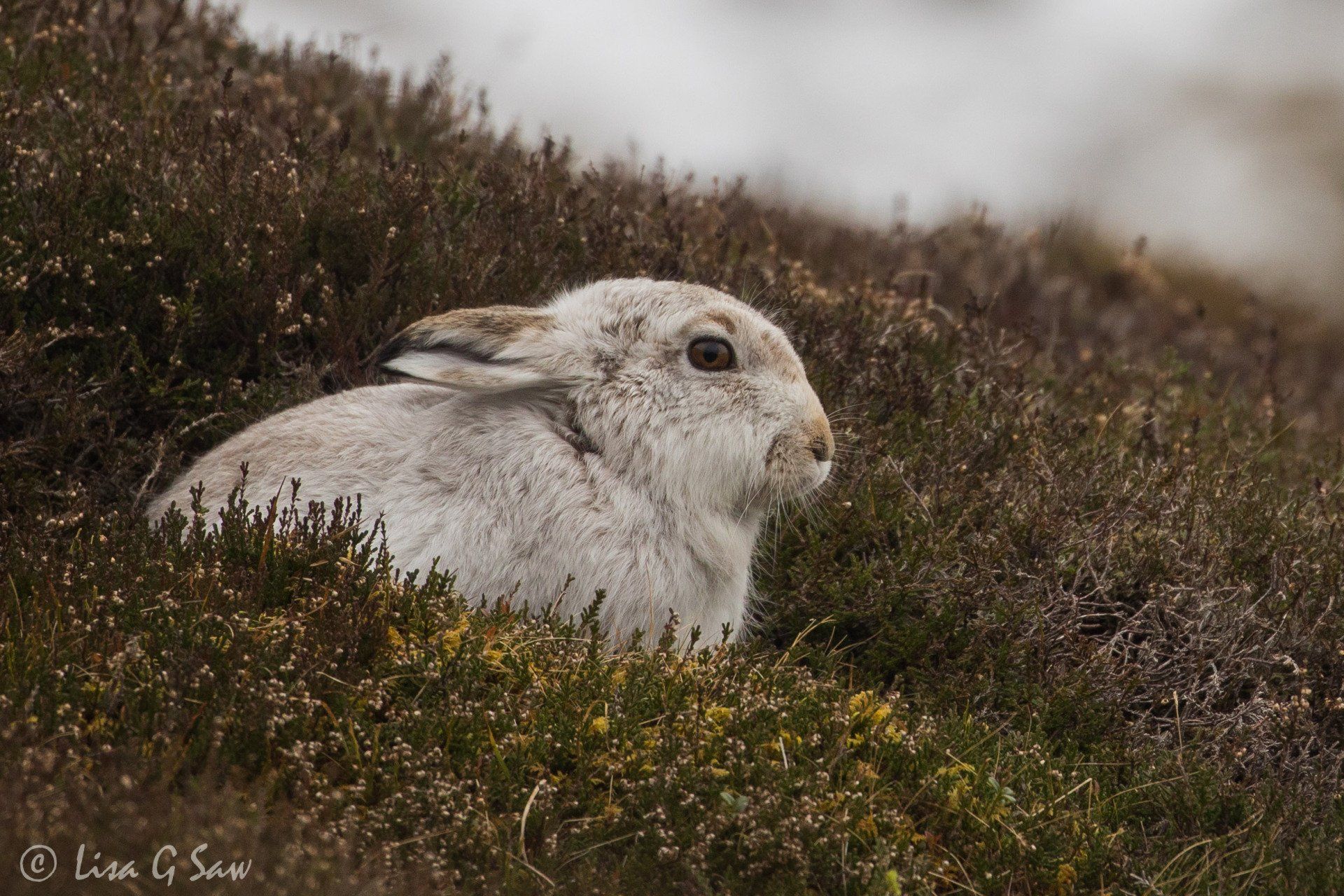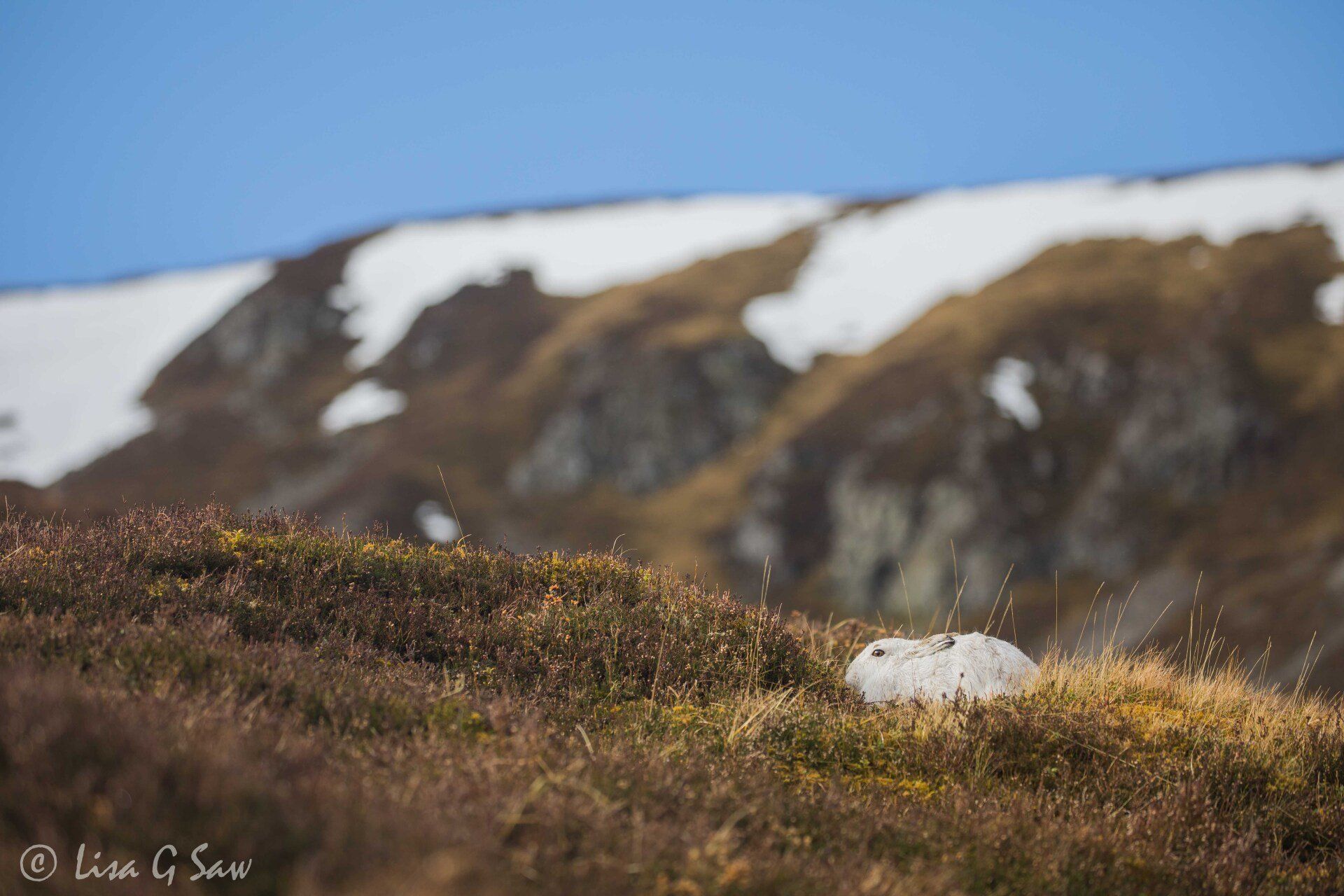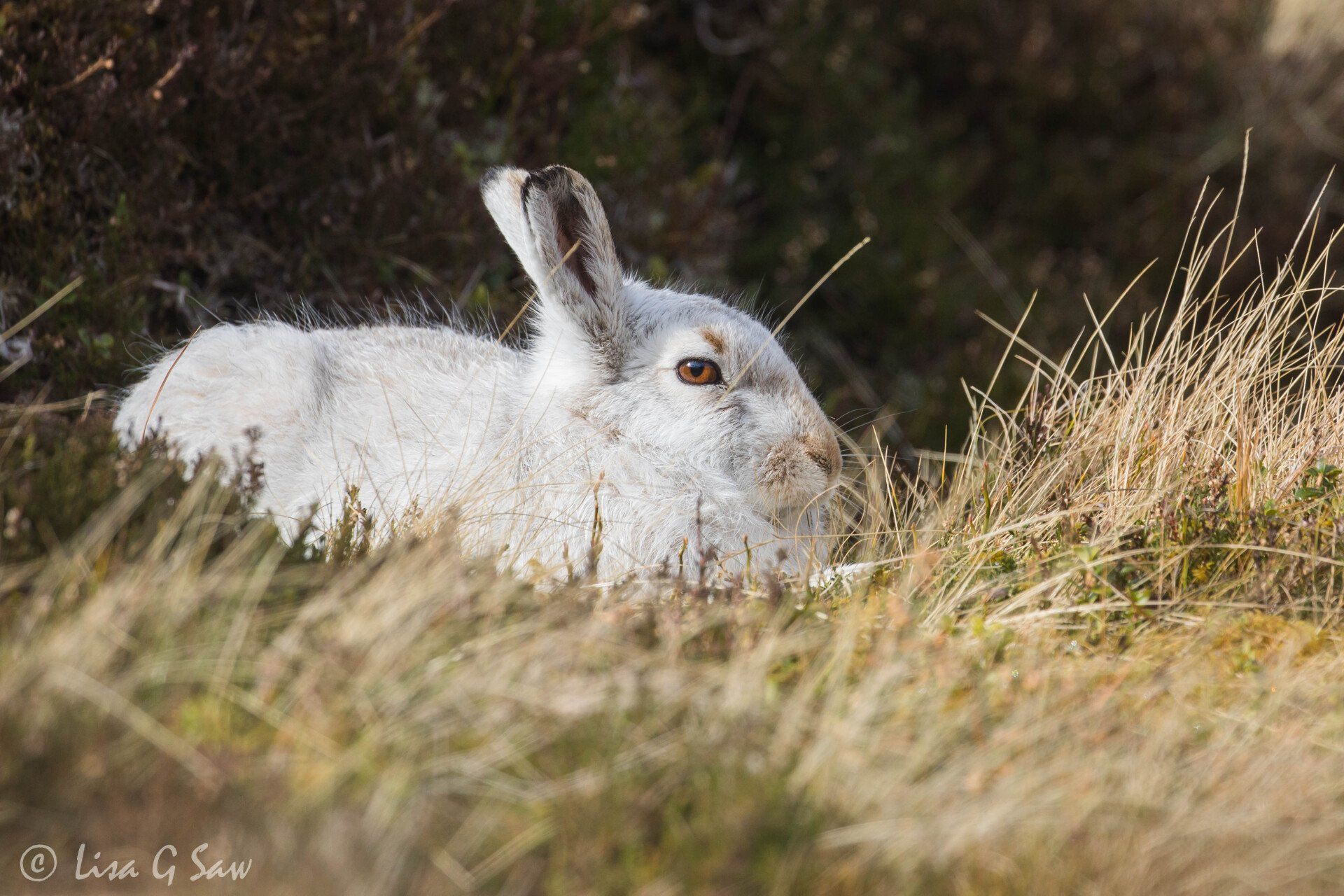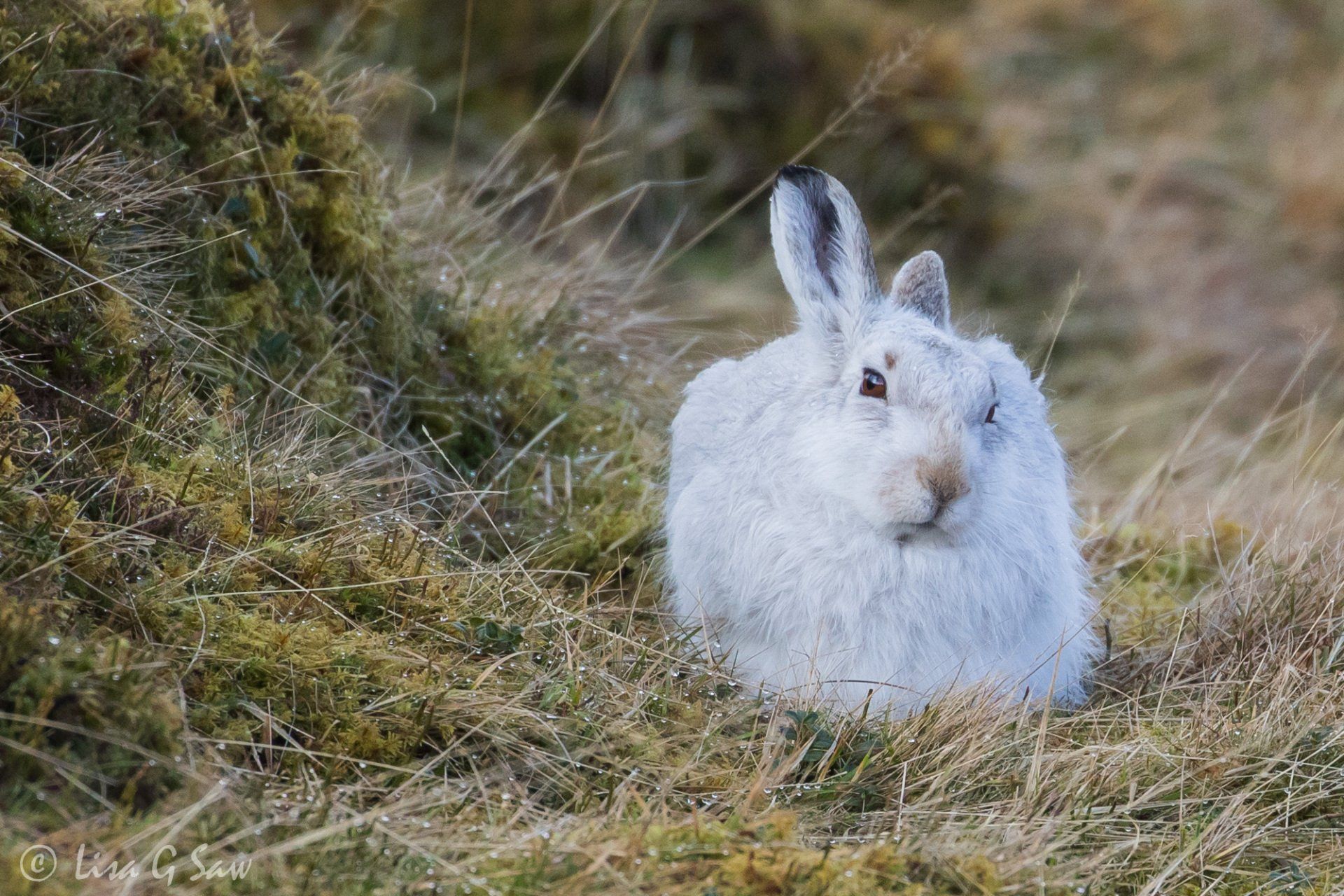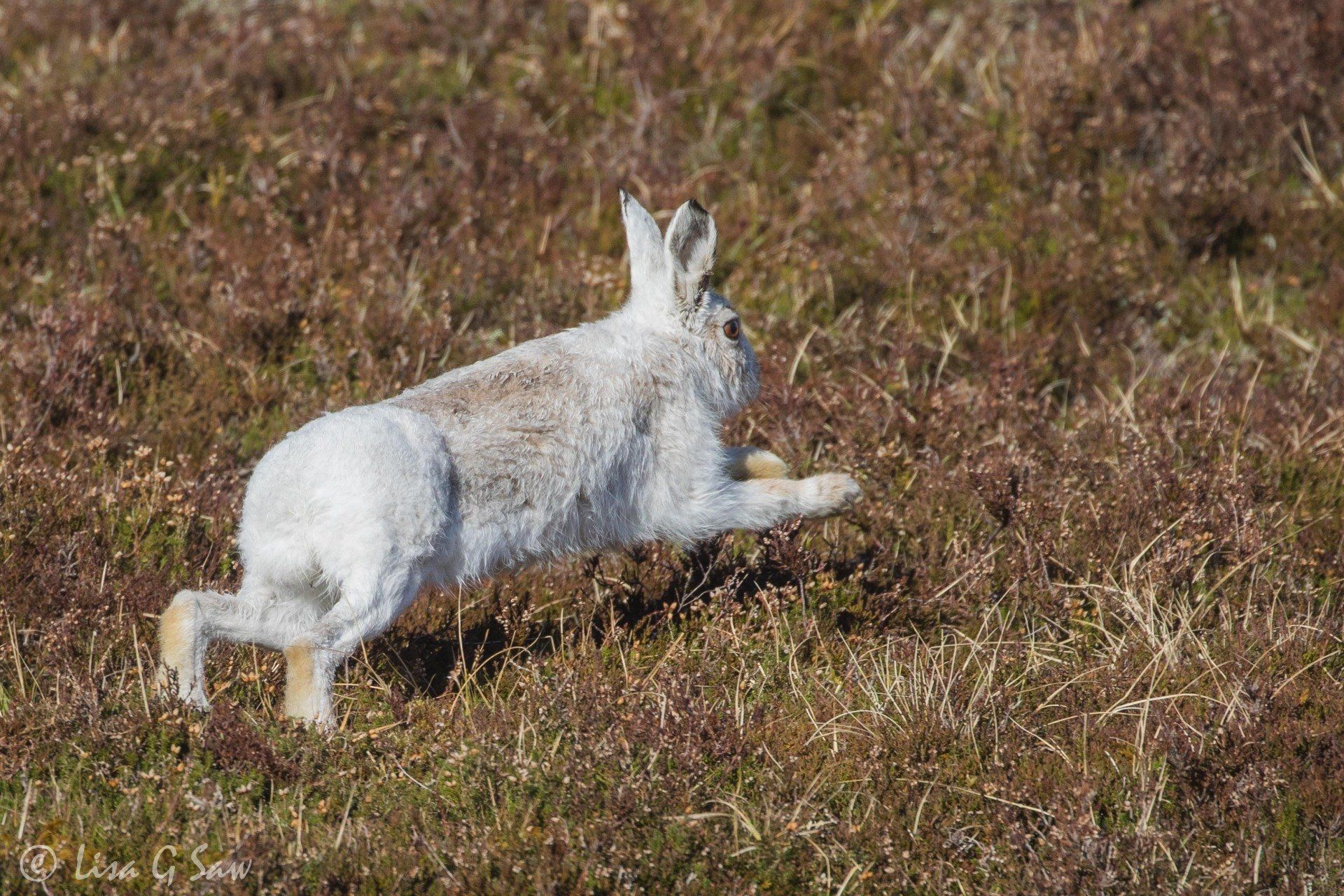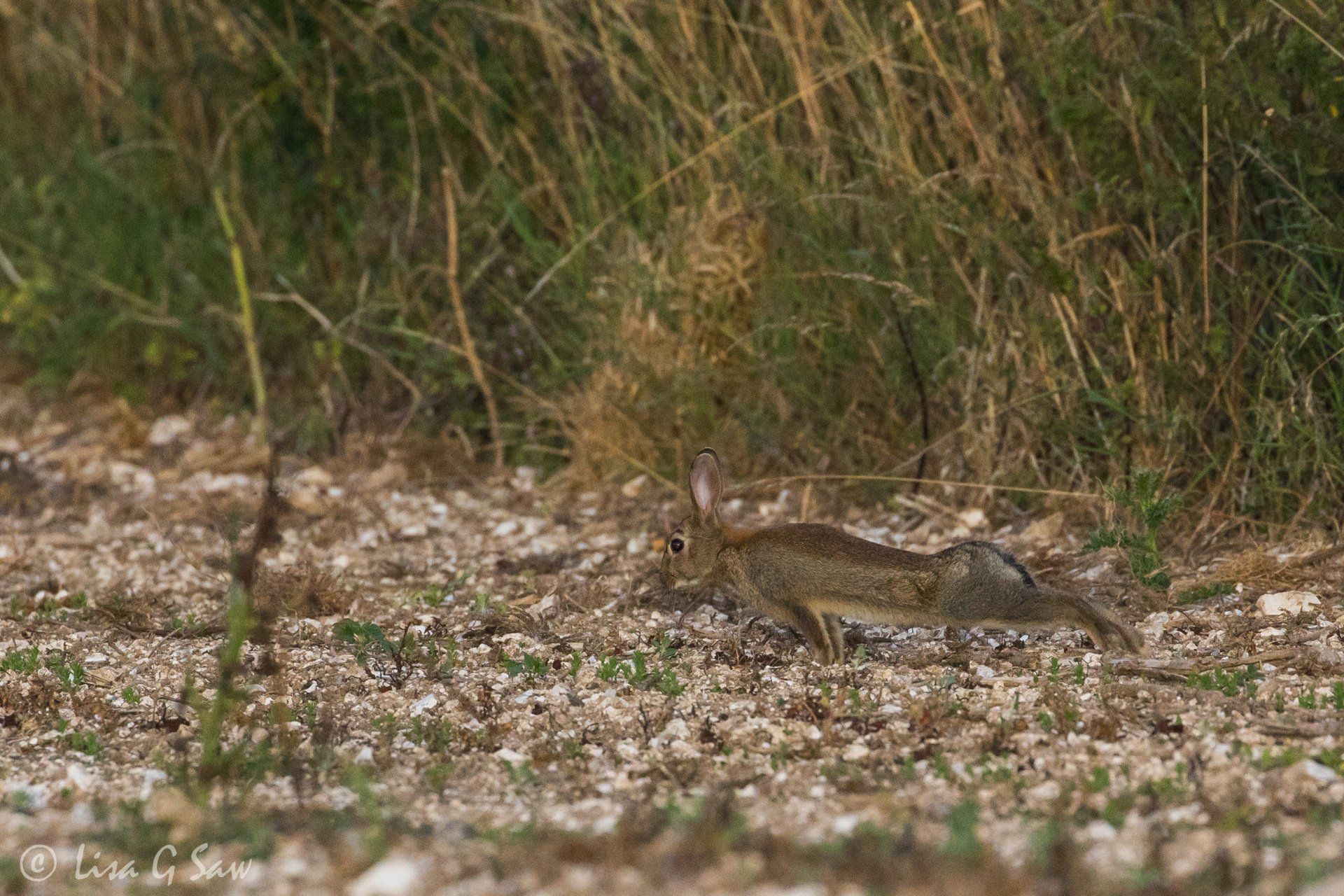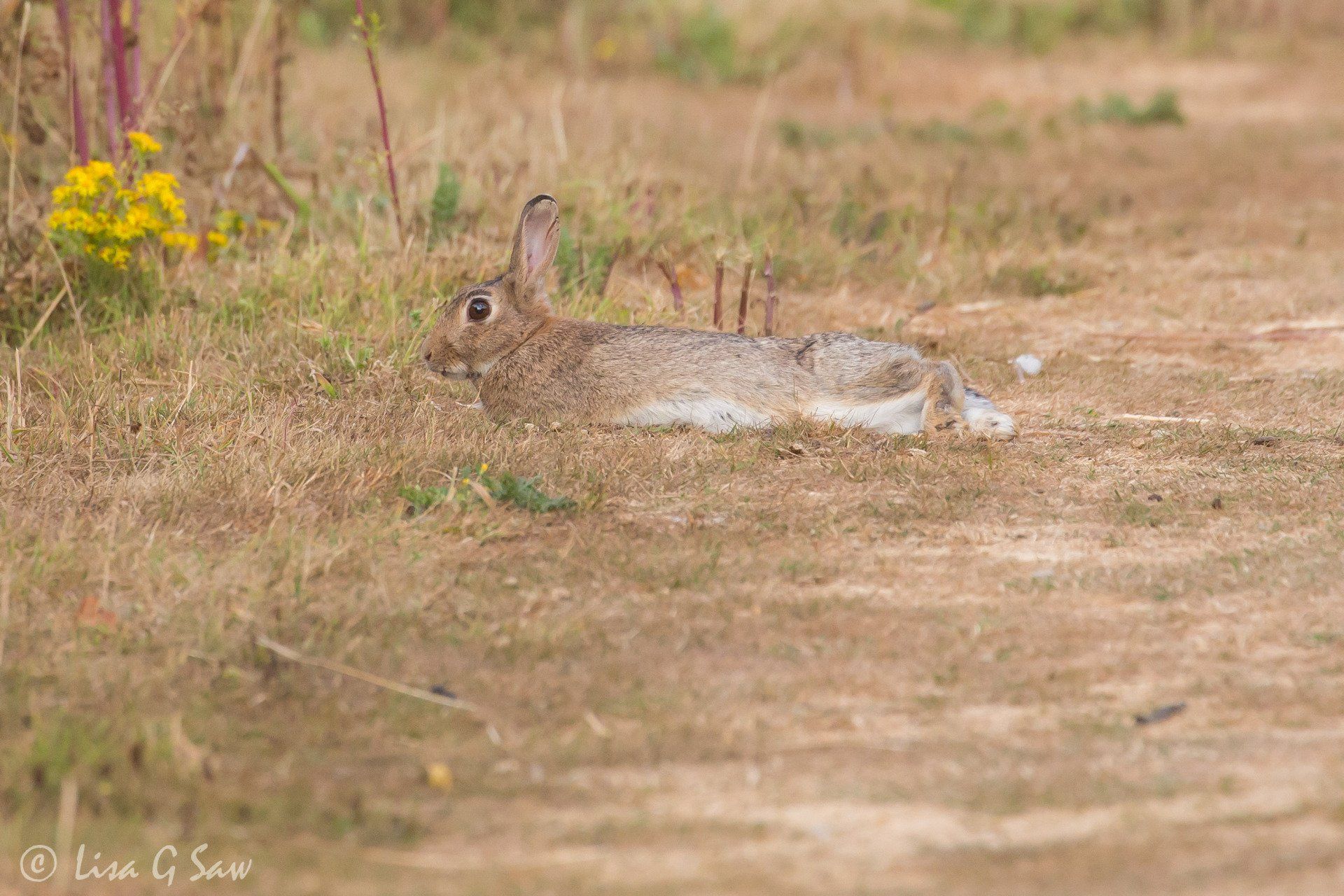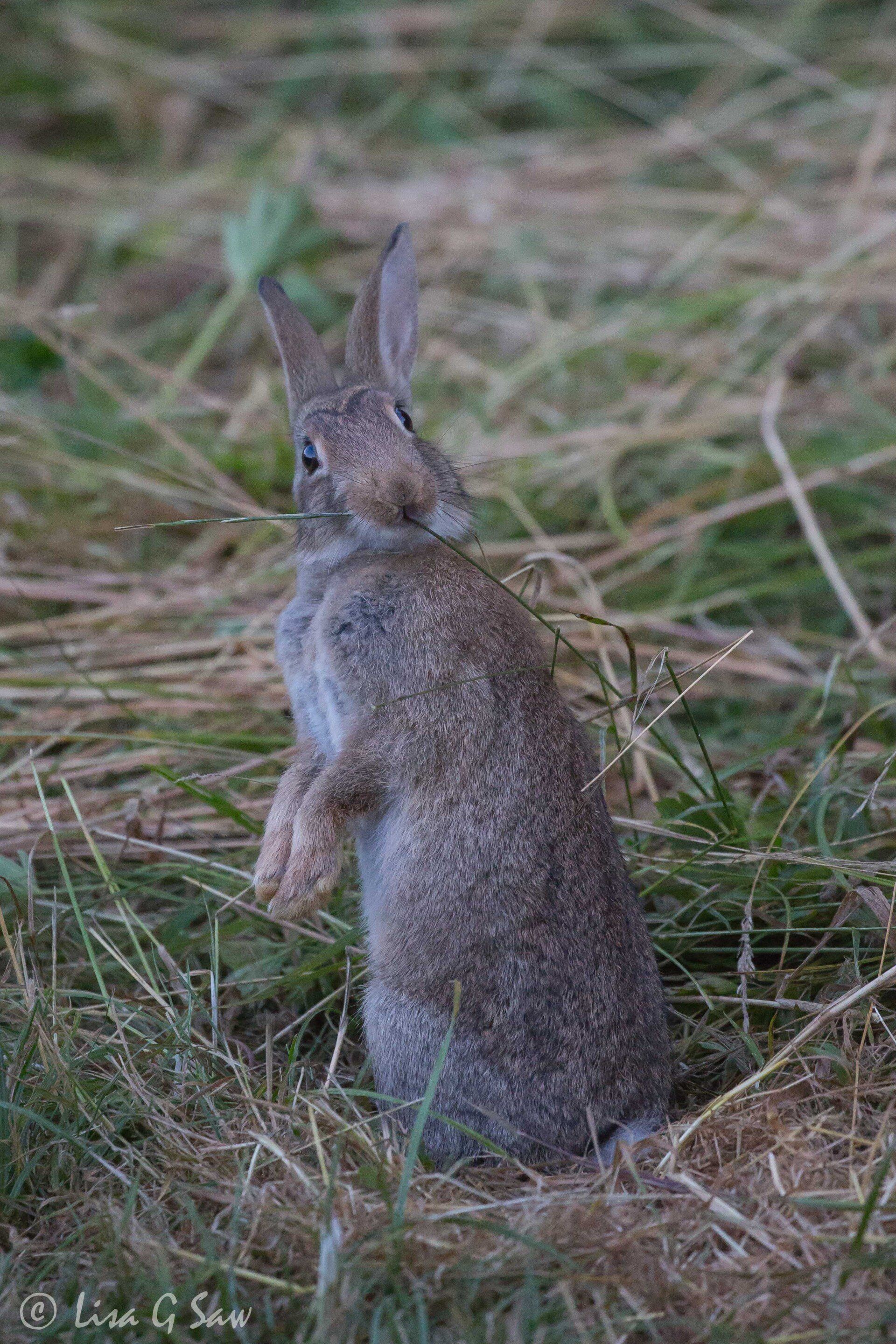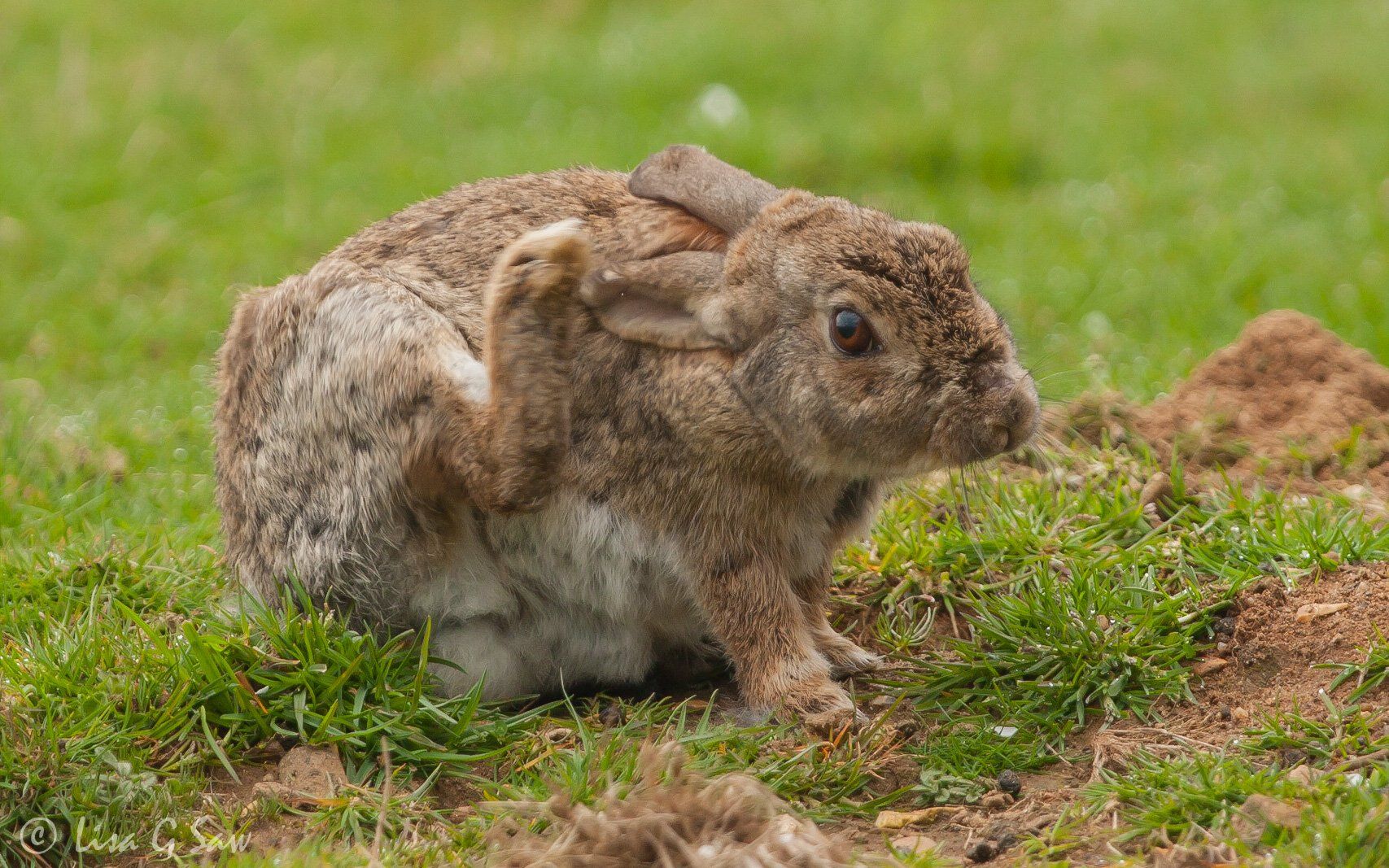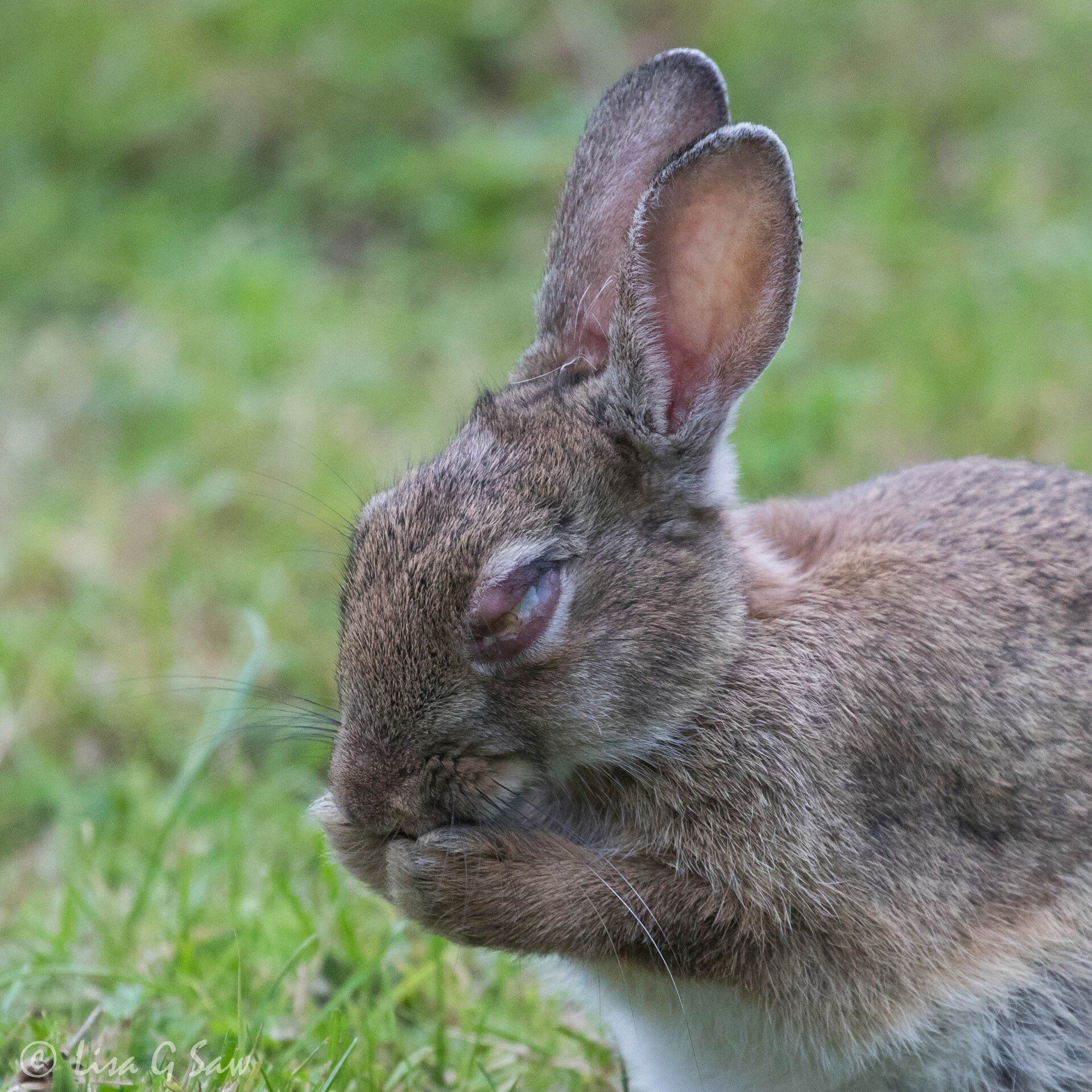HARES & RABBITS
Hares and rabbits belong to the same family - Leporidae. They are of similar size but hares are larger with longer ears and legs, they're both crepuscular (active at twilight) and unlike rabbits, hares don't live in burrows and are also nocturnal. Whilst there's only one species of rabbit found in the UK (European Rabbit - Oryctolagus cuniculus) there are a few different species of hare, the Brown or European Hare (Lepus europaeus), the Scottish Mountain Hare (Lepus timidus scoticus), which can also be found in the Peak District, and the Irish Hare (Lepus timidus hibernicus), which is currently considered a sub-species of Mountain Hare but might actually be a separate species.
Although hares are classed as being of least concern by the International Union of Conservation of Nature (IUCN) due to the moderate population across Europe, in some countries they have been in decline since the 1960s. In Britain there has been a decline of 75%. The reasons for this include farming intensification, changes in the pattern of land use and shooting, coursing and poaching.
Hares have traditionally been hunted for centuries, but the field sports of beagling and hare coursing became illegal with The Hunting Act of 2004. Despite this, illegal hare coursing is still known to take place in some areas of England. Unfortunately, regardless of declining numbers, it's also still legal to shoot hares throughout Britain.
Hares are usually always very alert, keeping an eye on you.
The ears rest on the back when they hunker down to keep a low profile.
An adult (right) with a young hare, which is called a leveret (left).
I was watching this hare at the edge of a field. It was alert, with its ears raised. Something unsettled it, because it then ran along the field margin, round the hedge and straight towards me (see below).
This is the most common view you'll get of a hare!
"What you lookin' at?"
Easy To Miss
Blending In
A Little Shut-Eye
Brown Hare in a pine forest in Scotland.
I was sitting in a sunken hide waiting for Red Squirrels to appear.
You can appreciate just how big its ears are!
Hares are so fast - to capture one leaping is such a thrill.
This hare was hunkered down right beside a footpath and didn't hear us approaching. I was chatting to a friend and we didn't notice it until we were only 10m away (we were downwind). Slowly, I lowered to the ground on the other side of the footpath and wriggled along a bit closer, like an army cadet in training, but still keeping some distance (using a telephoto lens). Fabulous!
MOUNTAIN HARES
Hares vary from each other in appearance slightly, but only the Mountain Hare's fur moults from brown to white (or partly white) in winter to blend in with its surroundings.
You can read about my adventures searching for Mountain Hares in Scotland by clicking on the link.
Even a white Mountain Hare can be hard to spot when there are white rocks and patches of snow on the ground. It would've been much harder to see on a blanket of snow!
Another classic shot of a hare running away, on snow no less (yay!), but out of focus (boo!)
This inspires me to do better next time!
The ears of the Mountain Hare are slightly shorter than that of the Brown Hare.
RABBITS
Little Bunny
The Plank
(Yoga)
The Sun Lounger
I stood still watching this rabbit happily sitting upright eating a blade of grass for quite a while, before it actually noticed me there!
A rabbit with myxomatosis showing around the eye.
SOURCES OF INFORMATION / RECOMMENDED READING
Brown Hares in the Derbyshire Dales: The story of one of the Peak District's most enigmatic mammals
by Christine Gregory (Vertebrate Publishing)
Hares by Nancy Jennings, RSPB Spotlight series (Bloomsbury)
The Hare Book edited by Jane Russ, The Hare Preservation Trust (Graffeg)
Internet
